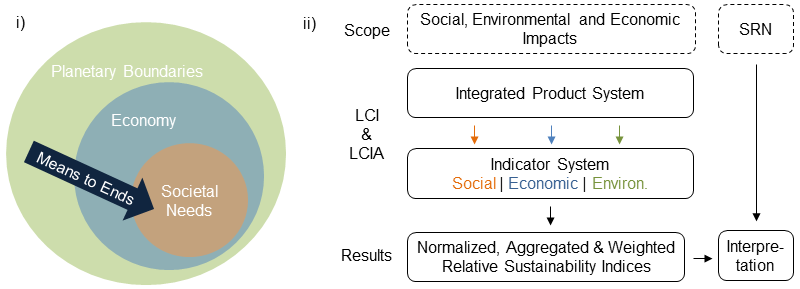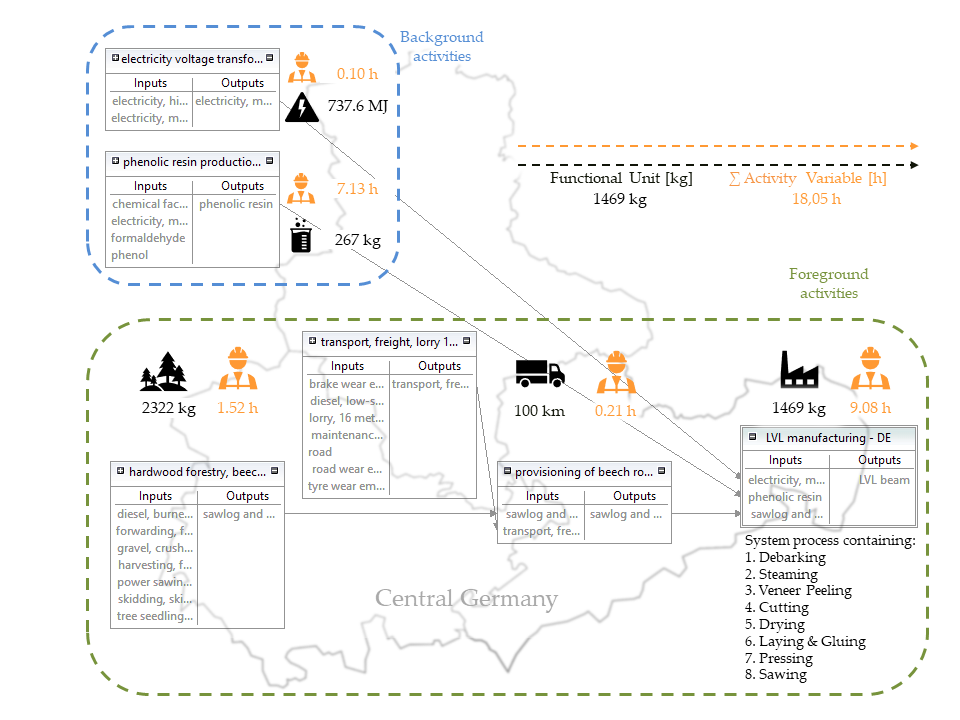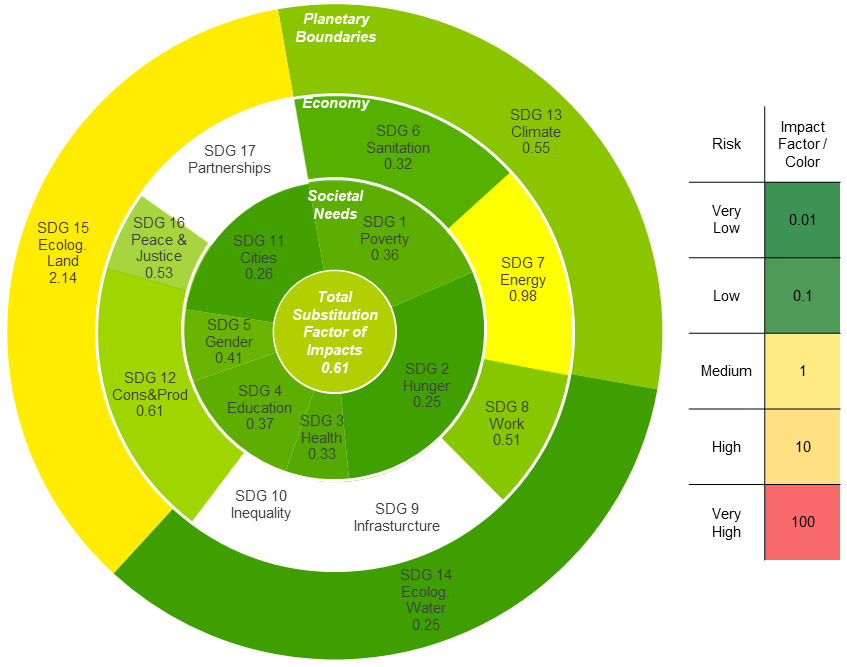Holistic and Integrated Life Cycle Sustainability Assessment (HILCSA)
Contact persons: Walther Zeug, Alberto Bezama
A measurement and evaluation of ecological, economic or social sustainability at all the stages of the life cycle of a product, process, or service is the central motivation of different methodological frameworks of well-established life cycle assessments (LCA) and their rather new combination or integration in life cycle sustainability assessments (LCSA). In this context, HILCSA (Holistic and Integrated Life Cycle Sustainability Assessment) is an innovative LCSA based model and method, able to assess and analyze holistic and integrated sustainability according to ISO 14040 and 14044.
According to the theory of societal relations to nature (SRN), economic systems comprise both physical and social systems, mediating the relationship between natural resources and societal needs by economic infrastructures and practices. Based on this, HILCSA considers sustainability as:
- Long-term and global fulfillment of societal needs and well-being as an end (social sustainability)
- Long-term stability of our environment as a basis of societal reproduction within PB (ecological sustainability)
- Technologies and economic structures as efficient, effective, sufficient and just metabolisms which enable the fulfillment of societal needs within PB (economic sustainability)

HILCSA allows an integrative (ecological, economic, social in one method) and holistic (transdisciplinary and critical) sustainability assessment based on about 100 social, ecological and economic qualitative and quantitative indicators addressing 14 out of 17 SDGs, in order to analyze synergies, trade-offs and hotspots of production and consumption systems in the bioeconomy and beyond. Processes, Products, Organizations and Regions are modeled as integrated production systems including material and energy flows as well as working time. This method is fully software implemented in openLCA and using the Ecoinvent/SoCa database.

Thus far, HILCSA has been applied in case studies in the context of bioeconomy, but in general is applicable to any economic system. The method identifies by relative sustainability assessment the ecological, social and economic performance of production systems when compared to e.g. fossil production system which can be substituted or to other use chains of resources. The qualiative and quantitative results are embedded in a transdisciplinary analysis of the political economy and ecology of systems, including stakeholder participation.
Applied in two case studies, it was shown that general social, ecological and economic effects are intertwined in synergies and trade-offs and that global inequalities and externalizations are maintained if the German bioeconomy relies on increasing biomass imports and does not bring structural changes in economic practices. Specifically, the material use of biomass in the building sector can be more sustainable than the use of non-renewable resources in terms of most SDGs, but the energetic use of biofuels entails complex risks and opportunities: greenhouse gas savings can be overcompensated by ecological, social and economic factors, which shows that an exclusive focus on greenhouse gas reduction carries a high risk of misregulation and mismanagement.

Through this quantitative and qualitative sustainability assessments HILCSA is able to identify synergies, trade-offs and hot-spots of bioeconomy production systems on a detailed and aggregated level. Such as common problems like planetary boundary of land and water availability limiting renewable resource and goods production, as well as maintained global socio-economic problems in supply chains. Eventually, the idea of a bioeconomy and systemic sustainability assessments is related to normative societal and political questions. HILCSA can provide comprehensive information and decision basis for stakeholders such as politics, society, research and organizations.
Non-commercial and commercial use of the HILCSA model
The HILCSA model can be licensed free of charge for non-commercial use and can be used upon request. Please contact the authors and sign the license agreement. If you are interested in commercial use, we look forward to your individual inquiry.
The prerequisite for this is the use of openLCA and the SoCa database.
Holistic and Integrated Life Cycle Sustainability Assessment (HILCSA) by Walther Zeug is licensed under CC BY-NC-SA 4.0
Method Update HILCSAv2.1
In recently ongoing research projects with HILCSA we identified two methodological problems of the HILCSAv2 aggregation method related to using the weighted arithmetic mean leading to undesired properties. For this reason, we revised HILCSA and introduced in February 2024 an updated HILCSAv2.1 which solves the issues and will be used in future applictions.
Publications:
Backgrounds of the method:
General framework:
Case studies:
